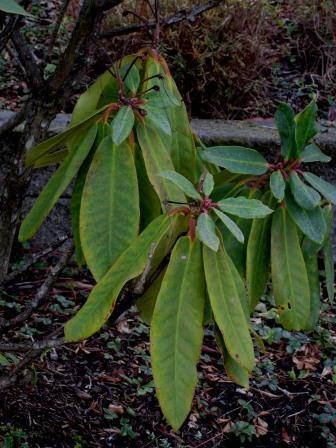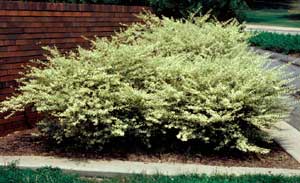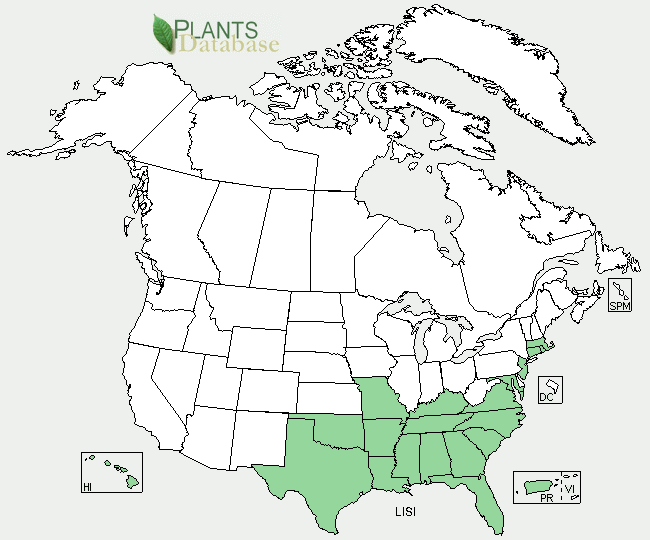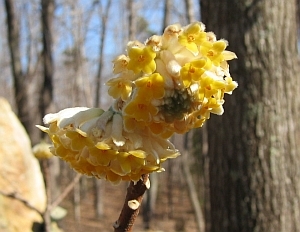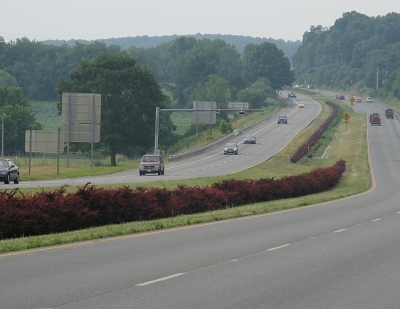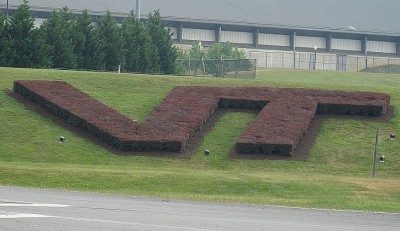There were several good shots at analyzing Friday’s unhappy rhododendron. Mature leaf size can be determined by light levels, as both Lisa B and Tom & Paul suggested. Moving a plant from a low to high light environment could cause this change in leaf size. This rhododendron hasn’t been recently transplanted, however, so we can eliminate light levels as a cause. (And there was no other impediment to light, such as the presence of shading plants.)
Lack of nitrogen was mentioned as well; but a lack of nitrogen would have resulted in chlorosis in newer leaves as well as smaller leaf size. In this case, the new leaves are not chlorotic. (The chlorosis on the older leaves is probably a phosphate-induced iron or manganese deficiency.)
Foy alluded to issues with water…and indeed that’s what I believe is happening with this rhododendron. Plants that exhibit smaller mature leaves in subsequent years are often limited by water. Full turgor is needed to force leaves to expand fully; without this physical pressure from inside, leaves fail to expand and once cell walls have lignified, leaf expanion ceases.
Lack of sufficient water during leaf expansion could be related to irrigation, though in our wet spring climate this is rarely a factor. More likely is a problem with the roots themselves. Definitive diagnosis would require digging up the plant to find out whether its roots are still encased in clay and burlap (my guess) or if something else is restricting their ability to grow beyond the planting hole.
